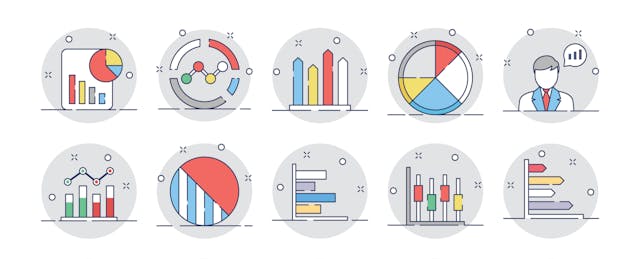Learning loss is everywhere—and so are reports detailing the setbacks. As some schools reopen, edtech product use declines. And “non-traditional” students appear more okay with remote online learning than their “traditional” peers. All in this Edtech Reports Recap.
Learning Loss in Math Exceeds Reading By Any Measure
Let’s get this out of the way up front: there is no shortage of surveys, analyses and other reports on pandemic learning loss among K-12 students who have suffered shuttered schools and unplanned days of remote online instruction. What differs is how those reports measure, how many are measured and what exactly they found.
Take Illuminate Education. In November, it released a brief on math and reading losses in grades K-8. Its measurement gathered up “more than one million” fall screenings given using its FastBridge adaptive assessments going back to fall 2016. It then compared annual growth from fall 2019 to fall 2020 to average annual fall-to-fall growth rates in previous years.
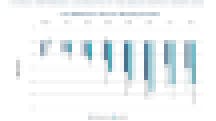
Illuminate found what it called statistically significant declines in reading in several grades, leading to “modest” reading losses across grades K-8. In mathematics, declines in achievement were “substantial” in grades 5-8. What does that mean? Reading losses varied from one to three months depending on grade, but math losses in grades 5-8 were the largest, accounting for three to four months of progress.
Renaissance Learning, maker of the Star Early Literacy, Star Reading and Star Math assessments, released its own analysis in November shortly after Illuminate’s report. It covered reading and math in grades 1-8. But its comparison was both more constrained in time—comparing results of students who took assessments in fall 2019 and fall 2020—as well as more expansive in absolute numbers, citing “5.3 million assessments” from 50 states and the District of Columbia.
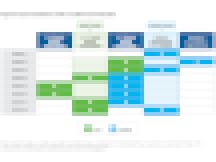
Overall trends, though, were similar. Math achievement and growth was hit harder than reading, with the negative effects characterized as “small” for reading and “moderate” for math. Renaissance looked at learning loss in terms of weeks behind, not months. For reading, the most behind were students in grades 4-7, needing four to seven weeks of instruction to catch up. In math, grades 5-6 were hardest hit at more than 12 weeks behind beginning-of-year expectations.
Perhaps the most widely reported of the edtech industry’s learning loss reports came from nonprofit NWEA early this month. Its study covered fewer grades but a lot of students, nearly 4.4 million in grades 3-8 across more than 8,000 U.S. schools who took NWEA’s MAP Growth in fall 2020, with a comparison of the results to fall 2019.
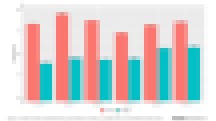
NWEA, too, found comparative student achievement in math was worse than in reading. But it might be the most optimistic of the three studies for reading, noting “students in grades 3-8 performed similarly” to same-grade students the previous fall. However, unlike Illuminate and Renaissance, NWEA didn’t estimate weeks or months of learning loss.
Some organizations, like McKinsey and Company, have done a meta-analysis of various reports. (McKinsey’s includes a study based on Curriculum Associates’ i-Ready assessment data.) Individual studies and other syntheses of findings also go into detail on subgroups and have found troubling and disparate impacts on students of color, students from lower-income families, or those in other underserved groups.
But all the conclusions seem to agree that K-8 student math achievement took a body blow far worse than that of reading. And they appear to acknowledge a common limitation of these reports: that the data comes largely from those students who were actually available to take an assessment in fall 2020—likely delivered online as part of remote instruction—so performance could be compared to fall 2019.
As the authors of the NWEA study put it when sharing concerns about the “missing” students in the data, “students may have opted out of testing because they lack reliable technology or because they have disengaged from school due to economic, health, or other factors.”
That, in itself, is a learning loss.
Inequity Back to … Normal?
LearnPlatform has extended its usage research for more than 8,000 edtech products through the pandemic. It’s now found that product use declined in October from a 2020 peak in September in all schools regardless of family income. The company’s data comes from tracking daily product use by 2.5 million students and teachers in 17 states.

There still were usage gaps between the higher family income districts (defined as those with less than 25% free or reduced-price lunch eligible students) and the lower-income districts, even though that gap narrowed. Districts serving more affluent families saw a steeper drop in product use throughout October, while use “declined only slightly” in lower-income districts—a gap LearnPlatform says “appears to be trending back to pre-COVID levels after significant widening immediately after school closures.”
Unstated by LearnPlatform, but a possible contributing factor? Anecdotal news stories that more-affluent parents were more likely to send their students back to in-person classes where schools reopened rather than keep them home for continued remote learning.
Bucking Tradition in Distance Learning
Get older, and online learning gets better. That’s one tech-related conclusion that could be drawn from a more general but thorough report titled, “The Pandemic’s Impact on Higher Education Marketing in 2020 and Beyond.”
Pulled together by higher ed marketing and ad agency LaneTerralever (clearly not a disinterested party), the survey questioned 528 current and prospective students across the U.S. in September, ages 18 and older. One interesting nugget: non-traditional students, ages 26-40, are somewhat more okay with distance learning than “traditional” students, ages 18-25.
The survey finds 47 percent of non-traditional students agree that “distance learning is extremely effective,” compared to 35 percent of traditional students. That gives schools what the agency says is “an opportunity to position their distance learning properly.”
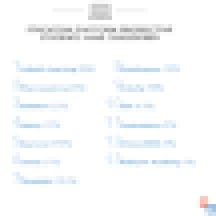
The report also tucks in an insight about “microlearning platforms” that students have considered during the pandemic. Topping the list is LinkedIn Learning, at 35 percent, followed by Khan Academy, at 34 percent. LaneTerralever notes: “While in the short term they might not post a direct threat to 4-year programs, they in many ways can compete for students seeking certificates or other continued education.”
